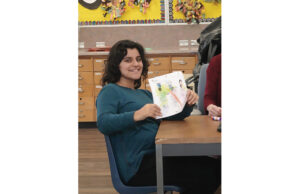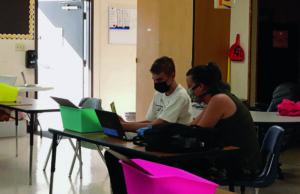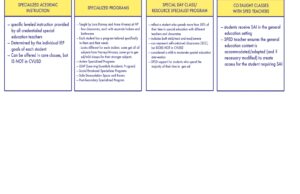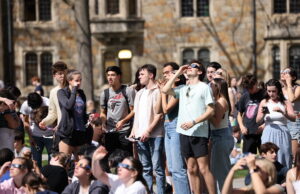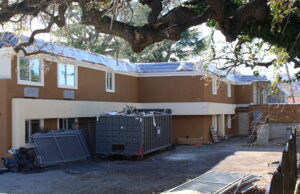Special Education students face new challenges
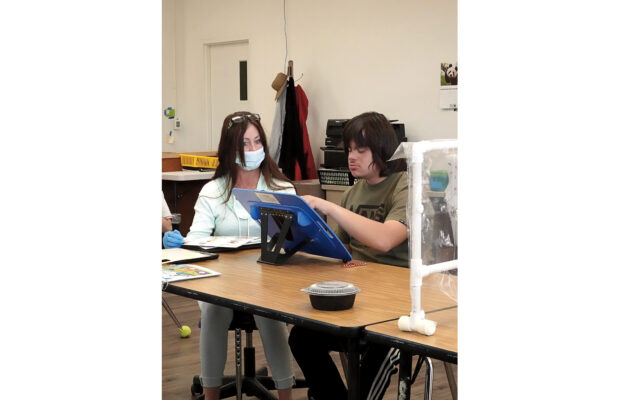
While the majority of students are not scheduled to return to school until January, several classes are well underway in the blended learning model. Select special education (SPED) classes first returned to campus in early October, while others have continued with the remote learning model. The staff has been working hard to make the necessary adjustments from a typical school year to ensure that these classes can run as smoothly as possible despite the obstacles caused by COVID-19.
Introduction to SPED
While 9.2 percent of CVUSD students are enrolled in SPED classes, many of their peers are likely unaware of what this term actually means.
Coreen Pefley, NPHS English SPED teacher, is very familiar with the program and its origin. “Special education comes from the federal program called IDEA, which is the Individuals with Disabilities Education Act,” Pefley said. “Basically, if a student has a disability that affects their education, the government needs to give special help or accommodations to help the students.”
The SPED program provides accommodations for a diverse group of students; fundamentally, the program is for the benefit of any student for which the general education curriculum does not suit their learning style. Angela Thomas, a paraprofessional, assists SPED students in the classroom. She explains the variety of students that SPED applies to. “[It can be] either because they have physical disabilities, if they’re in a wheelchair, blind or hard of hearing, but it’s also for students that have intellectual disabilities,” Thomas said.
The program varies vastly depending on each student’s individual needs; while some may be entirely in general education and occasionally work alongside SPED teachers, others attend co-taught general education classes with SPED educators present. In addition, some students attend specialized academic instruction, while others are in specialized programs specifically designed for students who require moderate to significant accommodations.
The Individual Education Program (IEP) is a system that gives SPED students the help they need for their academic journey. Within the program are support services such as extra time on tests and assignments, quiet testing environments, preferred seating, text to speech softwares, questions read aloud during examinations and a lack of penalties for minor spelling and grammatical errors. Students can apply to the IEP by getting evaluated by a professional; from there, the student’s school will decide if they qualify for the program, and what accommodations would be made available for the student.
Despite the importance of these accommodations, there can often be a stigma around SPED programs, much of which stems from incorrect assumptions made about the program. Lora von Kronemann, NPHS SPED history teacher, has noticed the negative effect that these misconceptions can have on students in her classes. “I think that people think the students in special ed are not smart. And then, unfortunately, the students who are in this program start to feel this way,” von Kronemann said. “If you don’t have that confidence in yourself, it’s hard to open up yourself to the possibility of learning.”
Educators are working hard to break the stigma and show that their students are working towards the same goal as everyone else on campus – to learn. “Even if it takes them a bit longer to learn things, it doesn’t mean they can’t learn,” Thomas said. “Everyone learns at a different pace and in different ways. They just take a class that gives a bit more time to achieve that.”
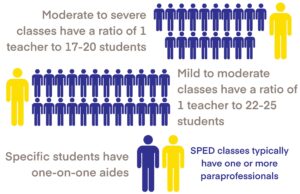
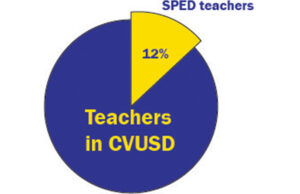
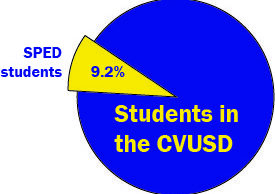
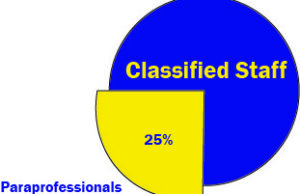
Special Education DAC
The Special Education District Advisory Council (SEDAC) is a committee made up of parents of SPED students who are working to ensure all students have the opportunity to succeed. Erika Johnson is a member of the committee who is helping to advocate for SPED students. “SEDAC advises district administrators and board of education on matters that are related to educational programs, policies, procedures and specific actions being taken for students receiving special education services,” Johnson said.
One of the main responsibilities of the council is to ensure every student is receiving the support that is necessary for them to succeed. “I am so grateful for [SEDAC’s] advocacy and their collaboration to work with site and district staff to ensure that all students who receive services through an IEP and/or 504 are considered and included in every school activity and/or decision made when it comes to all students at a school site,” Johnson said.
Breaking boundaries is crucial to providing SPED students with their optimal academic experience. Allice Chou, the chair of SEDAC, stressed the importance of bringing awareness to the invalidity of SPED stereotypes and assumptions.
“What I consider as part of my role is to really break the idea of the stereotype of what special education is. . .we all have our strengths and our weaknesses, and so part of it is finding out what are those strengths of the student,” Chou said.
Chou believes that the collaboration and communication from multiple parts of the district helps SEDAC aid students. “[Because of] the support of teachers, administrators, particularly, Dr. Miller and Dr. McLaughlin and the Board of Trustees…we have a voice and a meaningful seat at the table and not only are we invited, but we feel welcomed because of them,” Chou said.
Above all, SEDAC strives to create a supportive community for SPED students. “It takes a village…it’s not just the parent, it’s not just a teacher, and it’s not just a student. It’s all of us together,” Chou said.
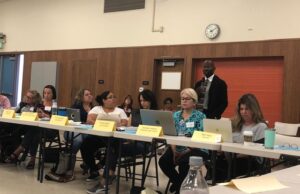
Learning Models
While some classes are back on campus, others will remain remote until all blended students return on Jan. 19. Through remote learning, teachers have faced some challenges, from not being able to emulate the experience in the classroom to properly accommodating all students’ needs.
“For a kid who has trouble auditorily, they’re not going to do really well if the teacher only talks to them all the time. They need things written down, they need to see things so that they can use some of their other senses,” Pefley said. “During distance learning, it’s really hard to always get the accommodations the way they’re supposed to be.”
Ensuring students are doing well in their classes is another challenge; remote learning creates a barrier between a teachers’ ability to check for student understanding. “Some of them might [respond], but some of them might not, and verbally responding is different from seeing them in person,” von Kronemann said. “It’s hard when they need to be prompted for that kind of help and assistance.”
Remote learning not only creates boundaries between teachers and students but between their peers as well; the ability for students to interact with each other can play a significant role for working on language development. Lisa Miller, assistant superintendent, noticed challenges with distance learning as well. “A lot of [speech and language intervention] is just the natural dialogue that happens between a speech therapist and the student and the other students in the room… on Zoom, it is often the adult doing the speaking,” Miller said. “The language engagement between peers is really valuable and important for our students who need to develop their language skills.”
Most programs have had to be adapted in order to suit online learning; physical education classes have continued over Zoom with modifications to their typical activities. Liam Mistry, sophomore, expresses his opinion on the new P.E. classes. “I miss having P.E… [but now] we do dancing, yoga and other exercise,” Mistry said. Several of the students typically participate in Unified Sports as well, which has held weekly Zoom meetings but cannot have games or practices at this time.
However, this is not to say remote learning is inherently negative; some SPED students are enjoying aspects of their online classes. John Perosio, sophomore, has benefitted from working primarily on the computer. “It makes me smarter, because I can focus better,” Perosio said.
For those who have returned to campus through the blended learning model, classes are held in-person four days a week for two and a half hours. “Because we don’t have that many students, we are just one cohort,” Thomas said. “Not all of our students have chosen to come back, so they don’t have the full class on campus at the moment.”
Students who have returned are happy to be back, and many agreed that the social aspect was one of the main motivations to return. “It’s better. I get to see my friends,” Carson Keene, freshman, said.
Being back on campus also aids in providing the support necessary for students to succeed; even with modifications for social distancing restrictions, there are still many benefits to returning to in-person education for SPED students. “[It is easier to] use things and get help in class,” Keene said.
